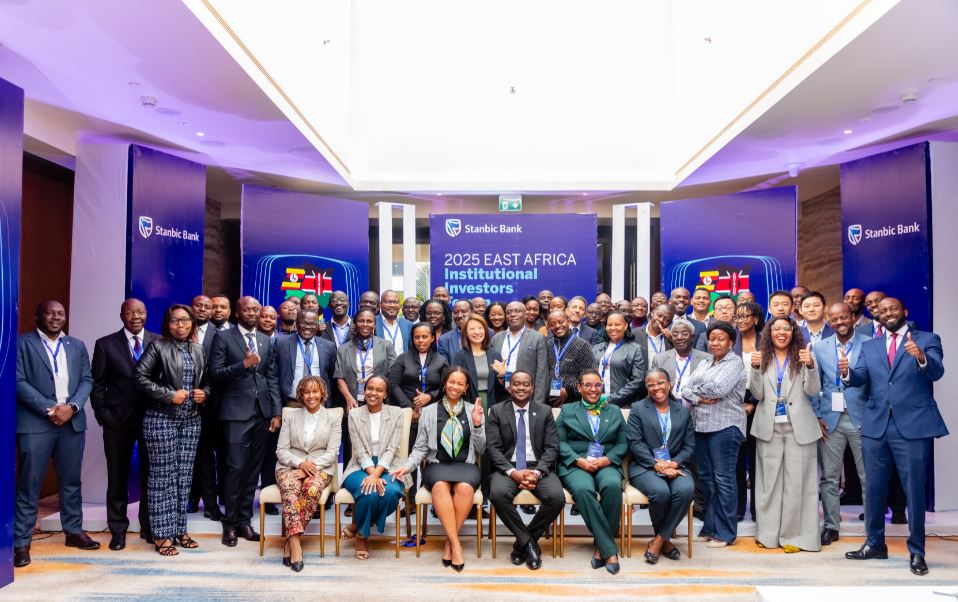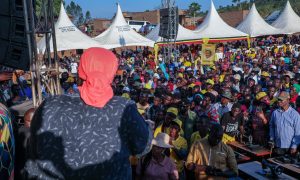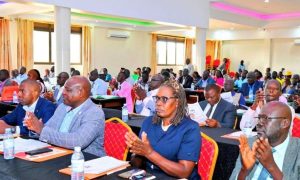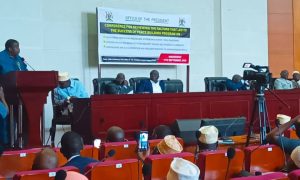East African nations are being urged to unlock domestic capital to address a staggering $42 billion annual infrastructure deficit that continues to hinder economic integration, regional trade, and sustainable development across the East African Community (EAC).
This was the central theme at the recently concluded 2025 East Africa Institutional Investors Forum held in Arusha, Tanzania. The two-day forum, convened by Standard Bank Group affiliates, Stanbic Bank Kenya, Stanbic Bank Uganda, and Stanbic Bank Tanzania, brought together institutional investors, policymakers, regulators, and financial sector leaders to deliberate on mechanisms for mobilising long-term local capital into strategic infrastructure ventures.
With limited fiscal space and mounting public debt in member states, speakers at the forum emphasized the need to transition domestic savings from passive instruments like treasury bills and bonds into active investments in energy, transport, real estate, and logistics infrastructure.
Addressing delegates during the forum’s opening, Aime Uwase, Director of Planning at the EAC Secretariat, said, “A robust infrastructure network is not only crucial but foundational for regional integration. Traditionally, much of our development funding has depended on external sources.
However, by unlocking domestic capital, we not only diversify funding sources but also build greater economic resilience.”
According to Uwase, inadequate infrastructure remains one of the region’s most pressing challenges, raising the cost of doing business, restricting market access, and diminishing East Africa’s competitiveness in attracting foreign direct investment.
The forum underscored a strong alignment among key stakeholders on the need to re-engineer local financial markets and develop investable infrastructure products that appeal to domestic investors, particularly pension funds and insurance firms.
Zoya Sisulu, Sector Head for Financial Institutions at Standard Bank, described the forum as an important platform where “critical players in the East African market regulators, asset allocators, and asset owners, come together to resolve market bottlenecks and collectively drive the infrastructure agenda.”
Micheal Sseguya, Head of Financial Institutions Group for Corporate and Investment Banking at Stanbic Bank Uganda, said the forum aimed to engage institutional investors on how to diversify portfolios beyond traditional low-risk instruments into large-scale infrastructure and real estate.
“We are engaging on how to structure these transactions to attract and de-risk private capital. Governments may not always have the capacity to fund these projects due to competing priorities, and that’s why mobilising domestic capital becomes urgent,” he said.

He added that the feedback from both investors and regulators during the forum was critical in identifying practical solutions and crafting pathways that can enable public-private partnerships to unlock new infrastructure investments.
Speaking on behalf of Stanbic Bank Tanzania, Benedict Nkini, Vice President for Financial Institutions, said East Africa holds a significant pool of untapped private capital across commercial banks, fund managers, and pension schemes, which could be harnessed to address funding gaps in infrastructure.
“The region requires innovative financial instruments and improved collaboration between infrastructure developers, financiers, and regulators to channel domestic capital toward transformative projects,” Nkini stated.
Despite the optimism, the issue of risk and fiduciary responsibility remained a recurring concern throughout the discussions. Institutional investors such as pension funds are legally bound to prioritize the safety and preservation of members’ savings, making them more cautious about investing in high-risk or long-tenure infrastructure projects.
Alex Rumanyika, Head of Strategy at Uganda’s National Social Security Fund (NSSF), acknowledged the balancing act required between security and impact.
“Our first priority is to ensure the safety of our members’ funds. However, we are also exploring ways of playing a more active role in national development, provided the right structures are in place,” he said.
Rumanyika suggested that infrastructure investments be packaged into exchange-listed instruments, potentially in partnership with institutions such as the Trade and Development Bank (TDB), to increase liquidity, transparency, and investor confidence.
He added, “The key is to have the right investment vehicles and skilled managers who can do the heavy lifting. Pensions are long-term in nature, but that doesn’t negate the need for solid governance and risk mitigation.”
Other concerns raised included lack of transparency, political interference, limited project preparation capacity, and policy unpredictability, all of which deter long-term investors from participating in public infrastructure deals.
Monitoring a panel discussion on the role of private capital in infrastructure, Mphokolo Makara, Executive Head of Energy and Infrastructure Financing for East Africa at Stanbic Bank, reiterated the need for investors to have a clear understanding of their risk appetite and how it aligns with their mandates.
“As capital providers, we must assess the risks involved, but also recognise the long-term value infrastructure brings to our economies. When properly structured and managed, these investments can deliver both financial returns and developmental impact,” Makara said.
The forum concluded with a strong call to action for governments and private sector actors to accelerate regulatory reforms, build investable project pipelines, and strengthen the institutional framework required to channel domestic savings into infrastructure development.
With the region facing urgent demands for modern roads, rail, ports, power grids, and ICT networks, the forum’s organisers expressed confidence that a well-orchestrated mobilisation of local capital can provide a sustainable alternative to foreign loans and aid dependency.
If effectively harnessed, stakeholders agreed, domestic capital has the potential not only to bridge the infrastructure gap but also to anchor long-term economic growth and integration across the EAC.


























